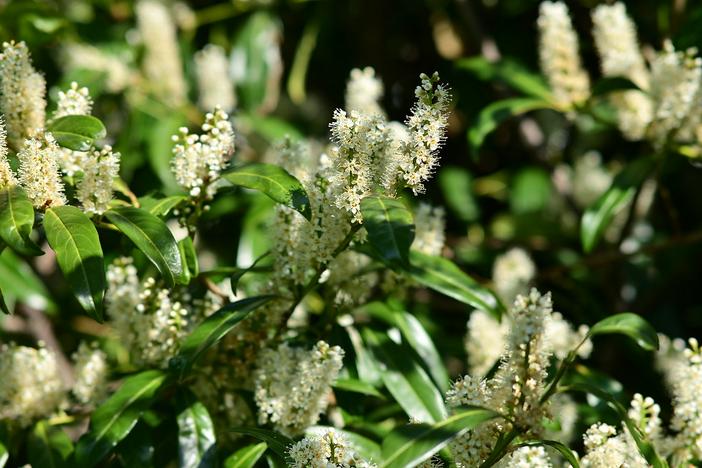Cherry Laurel
(Prunus laurocerasus)
Cherry Laurel (Prunus laurocerasus)
/
/

Janusz
CC BY-SA 2.0
































































































Estimated Native Range
Summary
Cherry Laurel is valued for its dense foliage and quick growth, making it an excellent choice for hedges, privacy screens, and massed plantings in landscapes. It is adaptable to a range of conditions, tolerating both shaded and dry sites, and responds well to pruning. This plant thrives in full sun to part shade and prefers soils with slow to fast drainage. While it is robust and easy to maintain, Cherry Laurel can be potentially invasive outside its native range, so gardeners should check local regulations before planting. Additionally, all parts of the plant are toxic if ingested, and it can suffer from shot hole disease, which causes spots on the leaves.CC BY-SA 4.0
Plant Description
- Plant Type: Shrub, Tree
- Height: 10-18 feet
- Width: 20-25 feet
- Growth Rate: Moderate
- Flower Color: Cream, White
- Flowering Season: Spring
- Leaf Retention: Evergreen
Growth Requirements
- Sun: Full Sun, Part Shade
- Water: Medium
- Drainage: Fast, Medium, Slow
Common Uses
Bank Stabilization, Bee Garden, Bird Garden, Border Plant, Butterfly Garden, Deer Resistant, Drought Tolerant, Edible*Disclaimer: Easyscape's listed plant edibility is for informational use. Always verify the safety and proper identification of any plant before consumption., Fragrant, Hedges, Low Maintenance, Rabbit Resistant, Salt Tolerant, Showy Flowers, Street Planting
Natural Habitat
Forests of the Balkans and Southwest Asia with moist, fertile soils
Other Names
Common Names: Cherry-Laurel , Laurbærkirsebær , Kirschlorbeer , Kirschlorbeerbaum , Lorbeerkirsche , Laurel Cerezo , Laakerikirsikka , Laurier Cerise , Laurier-Amande , Laurier-Cerise
Scientific Names: Prunus laurocerasus , Laurocerasus officinalis , Cerasus laurocerasus , Prunus grandifolia , Padus laurocerasus , Laurocerasus vulgaris , Laurocerasus officinalis var. sipkaensis , Laurocerasus otinii
GBIF Accepted Name: Prunus laurocerasus L.